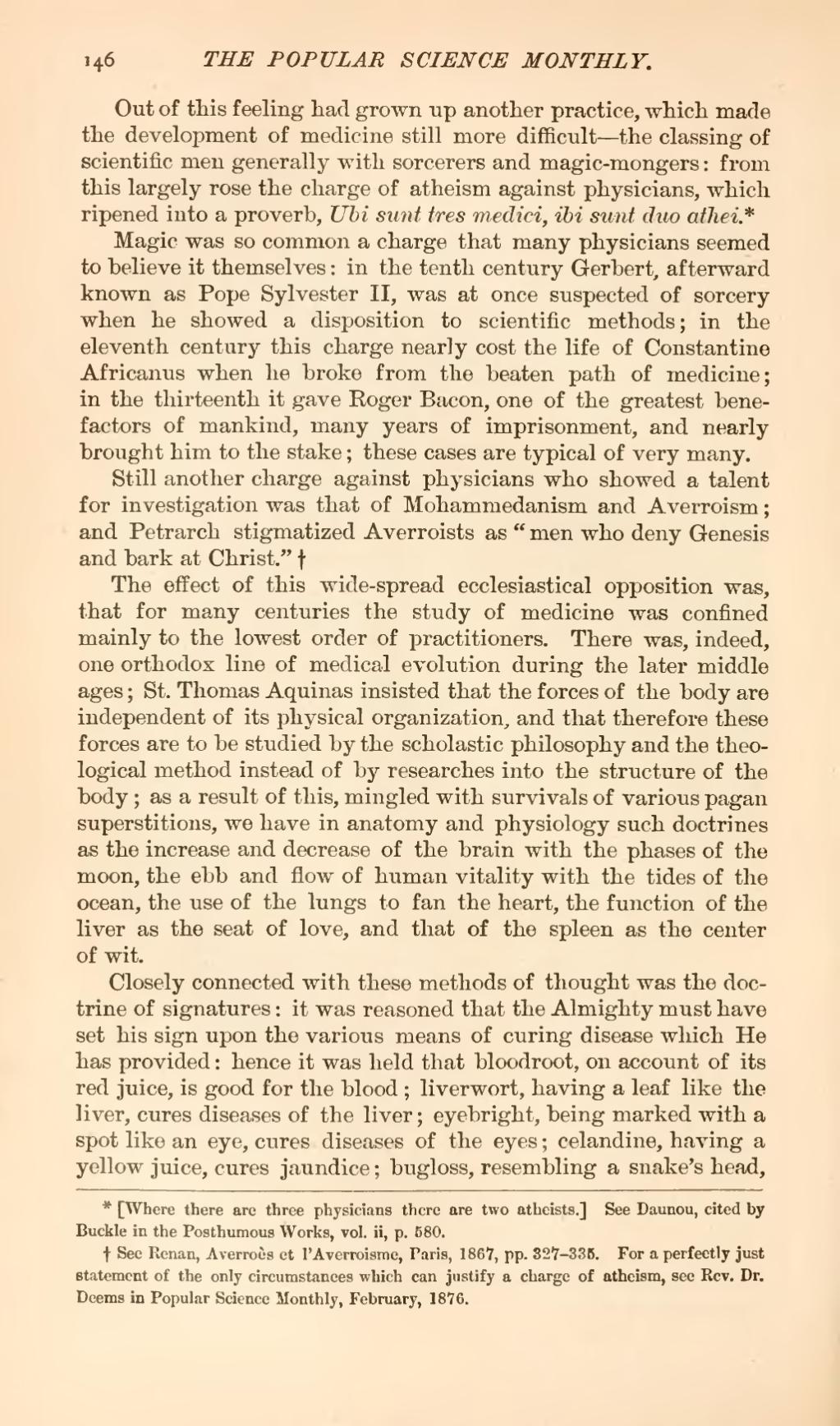Out of this feeling had grown up another practice, which made the development of medicine still more difficult—the classing of scientific men generally with sorcerers and magic-mongers: from this largely rose the charge of atheism against physicians, which ripened into a proverb, Ubi sunt tres medici, ibi sunt duo athei[1]
Magic was so common a charge that many physicians seemed to believe it themselves: in the tenth century Gerbert, afterward known as Pope Sylvester II, was at once suspected of sorcery when he showed a disposition to scientific methods; in the eleventh century this charge nearly cost the life of Constantino Africanus when he broke from the beaten path of medicine; in the thirteenth it gave Roger Bacon, one of the greatest benefactors of mankind, many years of imprisonment, and nearly brought him to the stake; these cases are typical of very many.
Still another charge against physicians who showed a talent for investigation was that of Mohammedanism and Averroism; and Petrarch stigmatized Averroists as "men who deny Genesis and bark at Christ."[2]
The effect of this wide-spread ecclesiastical opposition was, that for many centuries the study of medicine was confined mainly to the lowest order of practitioners. There was, indeed, one orthodox line of medical evolution during the later middle ages; St. Thomas Aquinas insisted that the forces of the body are independent of its physical organization, and that therefore these forces are to be studied by the scholastic philosophy and the theological method instead of by researches into the structure of the body; as a result of this, mingled with survivals of various pagan superstitions, we have in anatomy and physiology such doctrines as the increase and decrease of the brain with the phases of the moon, the ebb and flow of human vitality with the tides of the ocean, the use of the lungs to fan the heart, the function of the liver as the seat of love, and that of the spleen as the center of wit.
Closely connected with these methods of thought was the doctrine of signatures: it was reasoned that the Almighty must have set his sign upon the various means of curing disease which He has provided: hence it was held that bloodroot, on account of its red juice, is good for the blood; liverwort, having a leaf like the liver, cures diseases of the liver; eyebright, being marked with a spot like an eye, cures diseases of the eyes; celandine, having a yellow juice, cures jaundice; bugloss, resembling a snake's head.
- ↑ [Where there are three physicians there are two atheists.] See Daunou, cited by Buckle in the Posthumous Works, vol. ii, p. 580.
- ↑ See Renan, Averroès et l'Averroisme, Paris, 1867, pp. 327-335. For a perfectly just statement of the only circumstances which can justify a charge of atheism, see Rev. Dr. Deems in Popular Science Monthly, February, 1876.

